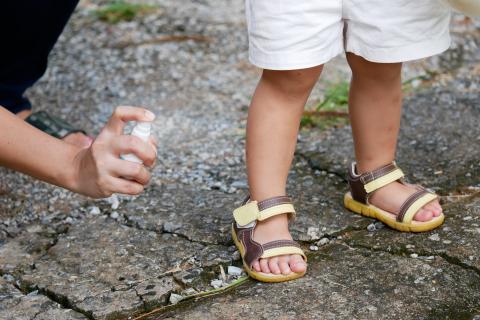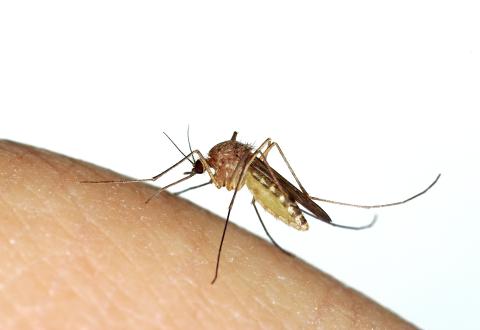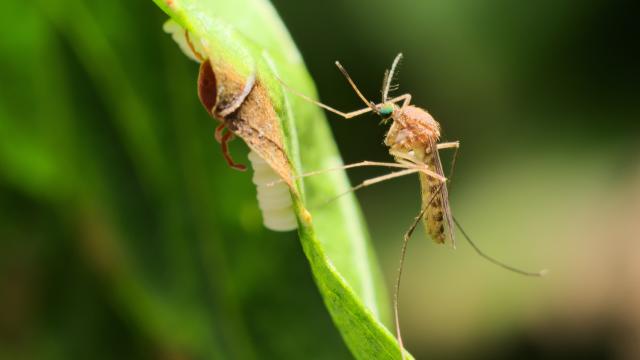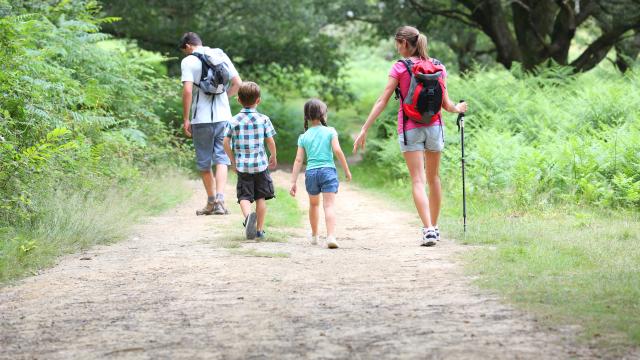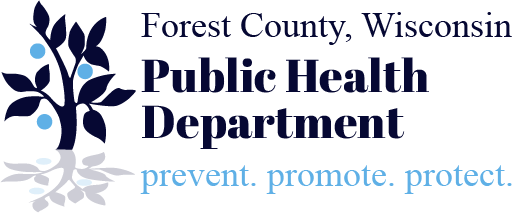Vector-Borne Disease
Lyme Disease
In Wisconsin, infected blacklegged ticks (also known as deer ticks) can carry the bacteria that cause Lyme disease and other tickborne diseases; and these diseases are increasing. According to the CDC, Wisconsin had 5,327 cases of Lyme disease in 2022. The average number of reported cases has more than doubled over the past 15 years.
Recognizing and treating tickborne diseases early is important. Signs and symptoms of Lyme disease, the state’s most frequently reported tickborne illness, may occur 3 days to 30 days after the bite of an infected tick and can include a characteristic rash called an erythema migrans (EM) rash, fever and chills, fatigue, headache, muscle and joint pain, and swollen lymph nodes. The rash is circular and red initially and expands over several days, though it may not occur in all cases. The disease is easily treated with antibiotics when detected early. If left untreated, Lyme disease can result in debilitating arthritis and serious heart and nervous system complications.
Other tickborne illnesses range from mild to severe and include anaplasmosis, the state’s second highest reported tickborne illness, babesiosis, ehrlichiosis, and Powassan virus disease. Signs and symptoms of these illnesses can include fever, chills, sweats, muscle aches, joint pain, headache, fatigue, nausea and vomiting, and loss of appetite. Severe cases can include a change in mental status, paralysis and coma, and can be fatal. Unlike anaplasmosis, ehrlichiosis and babesiosis, Powassan virus infections are not treatable with antibiotics.

Related Links
-
- Department of Health Services Information Page on Tick-Borne Diseases
- Lyme Disease May is Lyme Disease Awareness Month – State Officials Urge Precautions.
- Insect Repellents: Use and Effectiveness
- West Nile Virus – The Health Department is assisting the state with dead bird collection, you can reach the hotline by calling 800-433-1610.
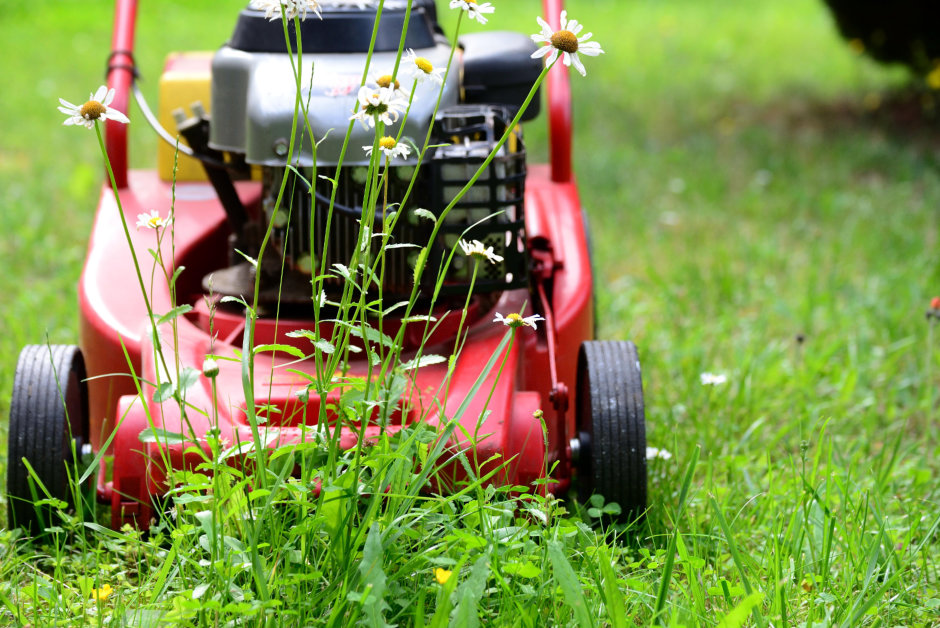


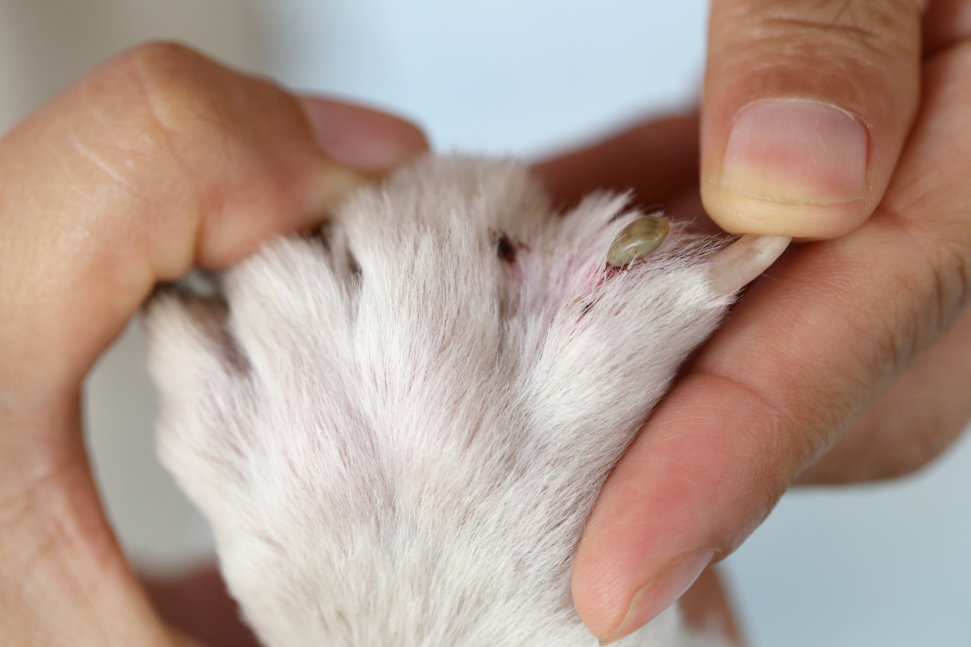
Steps to Reduce Tick-Borne Diseases
-
- Avoid wooded and bushy areas with high grass and leaf litter since ticks prefer these areas. Stay to the center of a trail to avoid contact with grass and brush.
- Use effective tick repellents and apply according to the label instructions. The U.S. Centers for Disease Control and Prevention recommends using repellents with 20% DEET on exposed skin and clothing to prevent tick bites. Adults should apply repellents to children, taking special care to avoid spraying in the hands, eyes, and mouth. Repellents that contain permethrin can also be applied to clothing.
- Wear clothes that will help shield you from ticks. Long-sleeved shirts and long pants are best. Tuck your pants into the top of your socks or boots, to create a “tick barrier.” Light-colored clothing makes ticks easier to spot.
- Landscape homes and recreational areas to reduce the number of ticks, and create tick-safe zones by using woodchips or gravel along the border between lawn and wooded areas. Continue to remove leaf litter and clear tall grass and brush around houses throughout the summer.
- Check your body frequently for ticks, and remove them promptly. Blacklegged ticks are small and may be difficult to find, so careful and thorough tick checks must be done on all parts of the body. It is important to pay special attention to areas where ticks tend to hide such as the head, scalp, and body folds (armpit, behind the knee, groin).
- Remove attached ticks slowly and gently, using a pair of thin-bladed tweezers applied as close to the skin as possible. Folk remedies like petroleum jelly, nail polish remover, or burning matches are not safe or effective ways to remove ticks.
- Protect your pets from tick bites by checking your dog or cat for ticks before allowing them inside. While a vaccine can prevent Lyme disease in pets, it will not stop the animal from carrying infected ticks into the home. Speak to your veterinarian about topical tick repellant available for pets.
Information provided by Department of Health Services.
ILLNESSES SPREAD BY MOSQUITOS
Eastern equine encephalitis, Jamestown Canyon virus, La Crosse encephalitis, Saint Louis encephalitis, and West Nile Virus are all illnesses caused and spread by mosquitos. These infections are most common in Wisconsin during the months of May through September, when mosquitoes are most active. Anyone can get sick from an illness transmitted by a mosquito, but risk is highest in children, the elderly, and anyone with a compromised immune system.
Causes: Mosquitoes can get a virus by feeding on infected animals and can then spread it to humans by biting them. The risk for mosquito transmitted diseases is greatest during warm summer months. These diseases transmitted by mosquitoes are rarely spread person-to-person. However, there have been cases of illness being spread through blood transfusions or organ transplants. Once a person has had a certain mosquito-transmitted disease, they usually cannot get that disease again.
Signs and symptoms: Most people infected with a virus spread by mosquitoes never know they are infected. When someone does have symptoms, they usually occur 5 to 15 days after being bitten by the mosquito and may include:
- Mild Symptoms may include fever, headache, vomiting, skin rash, body aches, and fatigue.
- Severe symptoms may include high fever, seizure, shakiness, paralysis, confusion, coma, inflammation of the brain.
Treatment Options: There is no vaccine or drug treatment for these illnesses spread by mosquitoes. Over-the-counter pain medications can be used to reduce fever and ease symptoms. Severe cases may require hospitalization for fluids, pain medications, and nursing care.
Prevention:
- Wear insect repellent with 20–30% DEET, 10–20% picaridin, 10–20% IR3535, or 30–40% OLE. Use 0.5% permethrin on clothes. Follow directions on manufacturer’s label.
- When outdoors, wear a long-sleeved shirt, long pants, high socks, and closed-toe shoes. Use insect repellent on clothes since mosquitoes can bite through clothing.
- Use screens on windows and doors of your home, and check that there are no holes in them.
- Get rid of standing water around your home where mosquitoes can breed. At least once a week, empty and scrub, cover, or throw out items that hold water, such as tires, buckets, birdbaths, or pet bowls. Make sure to regularly unclog roof gutters as well.
- Limit time spent outdoors at dawn and dusk from May to September, or when mosquitoes are most active.
Information provided by Department of Health Services.
